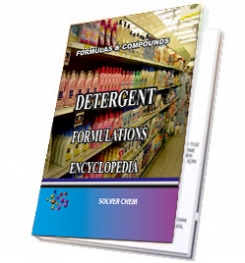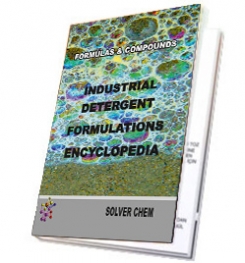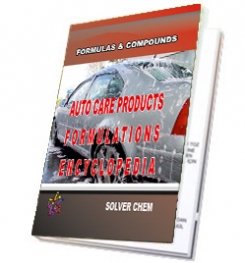- If you are using a pure fat, such as coconut oil or olive oil, you can skip to step 5. Coconut oil yields a soft, quick-lathering soap. Olive oil and other vegetable cooking oils yield a soft soap that never completely hardens.
- Render the tallow by cutting it into chunks, placing it into the large pot, covering it, and heating on medium heat until it is melted. Stir occassionally.
- Cool the fat to below the boiling point of water. Add a volume of water equal to that of the fat. Bring the mixture to a boil. Cover and remove from heat. Let sit overnight.
- Remove the fat from the pot. Discard non-fat gunk (scrape it off of the bottom of the fat) and any liquid.
- Measure 2.75 kg rendered fat. Cut the fat into tennis-ball size chunks and place the pieces into a large bowl.
- Set up all of your materials. Ventilate the area (or work outside), put on safety gear, and open all containers.
- Make soap :-) Pour the water into a large glass or ceramic bowl (not metal). Carefully pour the lye into the bowl and mix the water and lye with the wooden spoon.
- The reaction between water and lye gives off heat (is exothermic) and vapors that you should avoid breathing. The spoon will be somewhat degraded by the lye.
- Once the lye is dissolved by the water, start adding the chunks of fat, a bit at a time. Keep stirring until the fat is melted. If necessary, add heat (put on a low burner with ventilation).
- Stir in the lemon juice and fragrance oil (optional). Once the soap is well-mixed, pour it into molds. If you use glass baking dishes for molds, you can cut the soap into bars after it has become firmer (not hard).
- The soap will harden in approximately an hour.
- You may wrap the finished soap in clean cotton rags. It can be stored for 3-6 months in a cool, well-ventilated location.
- Wear gloves when washing your equipment, as their may be some unreacted lye remaining. Wash in very hot water to help melt away the residue.
Tips:
- Adult supervision required! Wear gloves and protective eyewear and cover exposed skin to avoid accidental exposure to the lye. Keep out of reach of children!
- If you get lye on your skin, immediately wash it with lots of cold water. Read the cautions on the container before opening the lye.
- Don't measure the lye. Instead, adjust the soap recipe to accomodate the container size of the lye.
- Cooking oils are sensitive to air and light, and soap made from cooking oils will spoil in a few weeks unless it is refrigerated.
- Volatile fragrance oils or even dried herbs or spices may be added to the soap to scent it. Fragrance is optional.
What You Need:
- 4 kg (9 lb) suet (tallow)
- 350 g (12 oz) lye
- 750 ml (3 C) water
- 500 ml (2 C) lemon juice
- 7.5 ml (.25 oz) fragrance
- gloves
- wooden spoon
- ventilated work area
- molds/glass baking dishes
RELATED TAGS : WHAT İS SOAP,DEFINITION OF SOAP,FORMULATIONS OF SOAPS,HOW TO MAKE SOAP,HOW TO PRODUCE SOAP,DIFFERENCE OF SOAP TO DETERGENT,TO MAKE DETERGENT,CLEAN AND SOAP,HOW TO MAKE SOAP MACHINE,HOW TO COMPOUND AND FORMULAS OF SOAP,HOW TO COMPOUND SOAP,HOW TO MANUFACTURING SOAP,PRODUCTION SOAP.
DETERGENT AND PRODUCTIONS
POWDER DETERGENT PRODUCTION is not very complicated. For the production, there is need usable and tried a formulation, raw materials and mixing tank. For raw materials to be used, quantities to be used and ingredients usage rankings, you should look into this formulation. Therefore, formulation and productıon methods of detergent are important. If you have not a good formulation, you cannot make healthy and efficient production of any detergent.
If you need any manufacturing formulations and production methods about
powder detergent,
DETERGENT
FORMULATIONS
ENCYCLOPEDİA
is enough.
This encyclopedia has many formulations of dishwasher cleaning products,dishwashing liquid production,kitchen cleaner products,laundry produts, powder laundry detergent,gel laundry detergents,liquid bleach products,powder bleach products formulations,surface cleaner products manufacturing process,multipurpose cleaner products,metal cleaners,bathroom cleaning products formulations,liquid soap formulations,antibacterial soaps,carpet shampoo,carpet cleaner detergent manufacturing processes, etc.
All detergent in the encyclopedia are producible easily.You need no help and no technıcal support. The encyclopedia is enough to produce liquid and powder detergent itself.
DETERGENT
FORMULATIONS
ENCYCLOPEDIA
is written clear and understandable.
RELATED TAGS: What is powder detergent, how to make powder detergent, making powder detergent, powder detergent manufacturing process, powder detergent production, formulations of powder detergent, types of powder detergent, anionic surfactant, detergent dyes, detergent fragranges, how to make powder detergent, preparation of powder detergent, cationic surfactant, anionic surfactants, detergents ingredients, how to use detergent ingredients, where to use surfactants, properties of powder detergent, machine of powder detergent, how to make powder detergent mixer, composition of powder detergent, production formulation of powder detergent, using powder detergent. compounds of powder detergent.
DETERGENT ENCYCLOPEDIAS AND CONTENTS


E - BOOKS AND HARD BOOKS
HOW TO BUY
DETERGENT ENCYCLOPEDIAS AND VIDEOS

|
|

|
|

|
|
